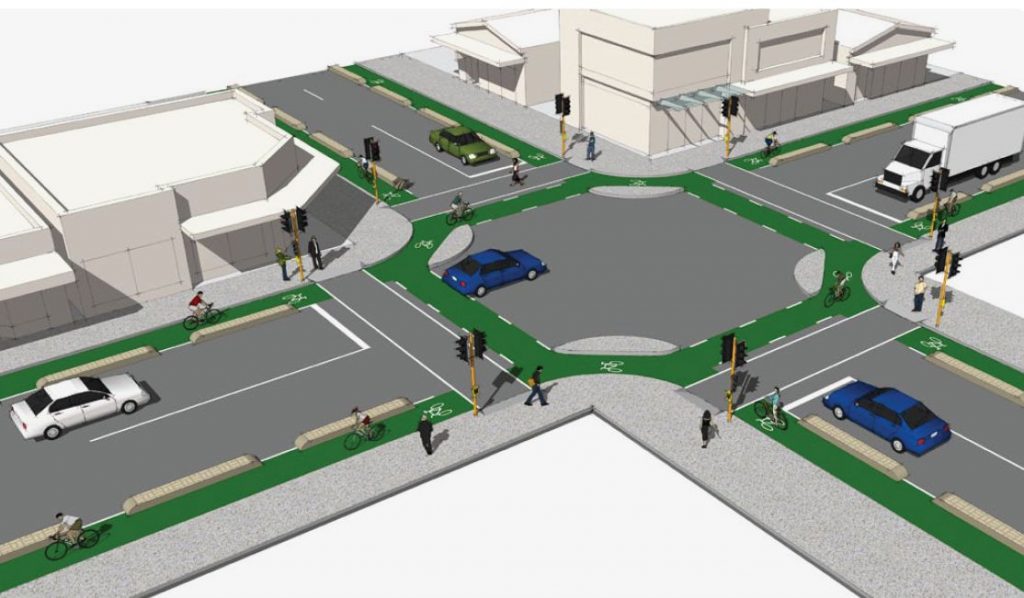When we look at some of the intricate Major Cycle Route layouts these days, it’s interesting to recall that it wasn’t that many years back when we had no local guidance for how to design these. National cycleway planning/design guidance has now filled a valuable niche but, before that came along, Christchurch City had to come up with their own efforts to help plan their initial post-quake cycleways. This post, originally from Apr 2013, introduces us to the initial concept design visions…
Another piece of the puzzle looks like it’s falling into place with the production of the draft Cycle Design Guide by the Christchurch City Council. This was presented to Council’s Environment & Infrastructure Committee on Thursday, who broadly endorsed it for (hopefully) approval by the full Council in the near future.
The Design Guide will provide some local guidance on how to develop future cycleways in the city, including the proposed 13 routes in the Three-Year Plan (and still The Press today perpetuated the myth about an extra $20 cycleway tax…). Although New Zealand already has some cycle design guidelines, and also relies on Australasian guides as well, generally they are relatively conservative in prescribing design details for ordinary on-road cycle lanes and off-road paths.
I’ve been able to have a look through the proposed Design Guide and I like what I see. It borrows from a variety of examples from Europe and North America, while putting a local spin on the designs. It also provides a very wide range of treatment options, as it is likely that particular routes will actually be a mix of facilities to reflect the network along the way. For example, such routes could include:
- Separated “cycle tracks”, protected from traffic lanes by kerbs, islands, or posts
- Off-road shared pathways through parks and other reserve corridors
- Neighbourhood greenways along quieter local streets
- Clever intersection treatments to provide for safe crossing
Intersections on major routes get some interesting treatments suggested. There are Dutch-style signalised intersections that are designed to minimise conflicts through design and signal phasing (see here for a really useful video explaining it all). Another option is to provides a “Barnes Dance” similar to pedestrian ones, which allows riders from all directions to make their desired movements while other traffic is stopped.

The Design Guide even deals with little details like how to get a cycleway around a bus stop or past driveway crossings. It also incorporates clever things that we are already making use of, such as hook turns, cycle lane separators, and cycle crossing detectors.
Apparently there are a couple more details that Councillors would like to see in the Guide regarding two-way separated cycle tracks and “contra-flow” cycle facilities. But already it looks like a fabulous resource on which to build our cycle-friendlier city. Now there’s just the small matter of approving that $69million of cycleways…
{Update: Council has now approved the Guidelines and they can now be downloaded here}
What do you think of the proposed cycle design layouts? Does it mirror what you are seeing on the ground now?
